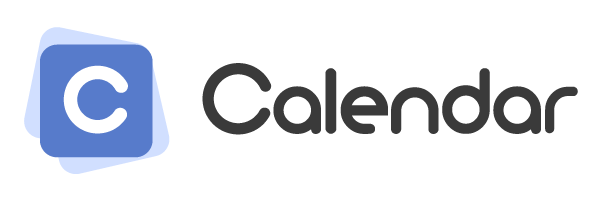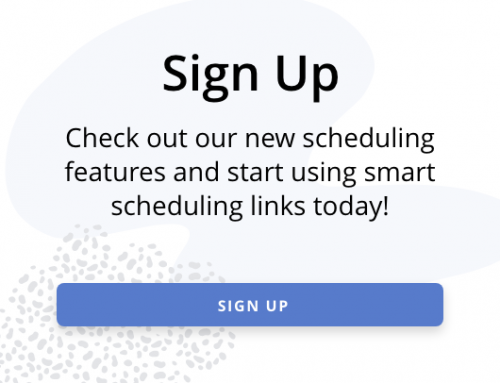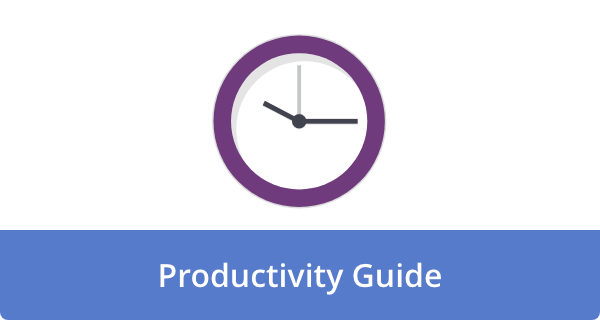

If you are working remotely, you’ll want to work toward your best self and master your work. To do this, you’ll want to utilize your Calendar for Productivity. Here are some secrets to help you unlock your efficient and effective self as you conquer remote work. You’ll be able to embrace digital calendar tools and techniques. Let’s dive into remote work mastery, from establishing a solid routine and prioritizing tasks to synchronizing your calendars for seamless collaboration with your peers.
Embracing Digital Calendars for Success
Embracing digital calendars can significantly boost your productivity while working remotely. These innovative tools offer unique features that allow you to plan your day, set reminders, and manage tasks efficiently. For example, Google Calendar has a drag-and-drop feature for easy rescheduling, while Microsoft Outlook can be integrated with various other applications and to-do lists.
To maximize the benefits of using digital calendars, explore their full potential by setting up recurring events, utilizing different views like daily or monthly, and organizing events with color-coding. For team management, shared calendars can be invaluable for coordinating and assigning tasks. Additionally, some productivity software, like Trello or Asana, integrates with your digital calendar to provide real-time updates, deadlines, and progress.
Establishing a Remote Work Calendar Routine
Establishing a remote work calendar routine is essential for maximizing productivity. By setting up a structured schedule, remote workers can better manage their time, allocate resources effectively, and maintain a healthy work-life balance. One way to do this is by using the Pomodoro Technique, which involves breaking work into 25-minute intervals, called “pomodoros,” followed by a 5-minute break. After completing four consecutive pomodoros, a longer break of 15-30 minutes can be taken. This method can help maintain focus, reduce burnout, and increase overall productivity. Additionally, incorporating daily and weekly goal-setting sessions into the calendar can help workers stay on track and prioritize tasks effectively.
To boost collaboration and communication among team members, a shared calendar, such as Google Calendar or Microsoft Outlook, can be utilized. This way, everyone can be aware of each other’s schedules, deadlines, and important meetings or events, creating transparency and ensuring that no important tasks are missed. Moreover, integrating the calendar with project management tools like Trello or Asana can help teams stay organized and easily monitor project progress in real-time. Another way to facilitate seamless transitions between tasks is by using color-coded calendar entries for different types of tasks, such as green for meetings, blue for project work, and red for personal appointments. This visual system allows workers to quickly understand the structure of their schedule and easily transition from one task to the next.
Effectively Schedule and Prioritize Tasks
Mastering the art of scheduling and prioritizing tasks is crucial for remote work productivity. To begin, a quick and efficient way to identify high-priority tasks is to utilize the Eisenhower Matrix, which divides tasks into four categories: urgent and important, important but not urgent, urgent but not necessary, and neither urgent nor important. By categorizing tasks in this manner, you can efficiently allocate your time to what truly needs attention and avoid spreading yourself too thin. Additionally, setting deadlines for each task and marking them on your calendar can help you stay on track and ensure the timely completion of your work.
When it comes to managing your calendar effectively, technology is your friend. There is a wide array of digital calendar tools available, such as Google Calendar or Microsoft Outlook, which not only let you schedule your tasks but also facilitate a seamless sharing of your calendar with team members. This sharing feature fosters collaboration and aids in managing remote teams more efficiently. Furthermore, available integrations with task management tools like Trello, Asana, or Todoist can centralize all your projects and to-do lists in one place. By using digital tools and organizing your calendar accordingly, remote work mastery is just a few clicks away.
Syncing Calendars for Seamless Collaboration
Syncing calendars is the key to seamless collaboration in a remote work environment. When team members’ calendars are synced, scheduling meetings and tracking deadlines become a breeze, allowing everyone to stay organized and on task. Tools like Google Calendar, Microsoft Outlook, and Apple Calendar offer seamless synchronization options, making it easy for remote workers to stay connected. Furthermore, integration with project management tools such as Asana, Trello, and Slack ensures that tasks, deadlines, and events are automatically updated, ensuring all team members are on the same page at all times.
To attain Remote Work Mastery, establish a habit of regularly updating your calendar and encourage your teammates to do the same. A shared calendar keeps everyone aligned and informed about project milestones, planned meetings, and important deadlines, minimizing miscommunications and fostering a collaborative work culture. Also, consider color-coding events and tasks for better clarity and understanding. By syncing calendars and thoughtfully managing the display of your team’s availabilities, you create an environment that not only enhances productivity but also promotes open communication, fostering strong teamwork in the virtual office.
Time Blocking Techniques for Optimal Productivity
Time blocking techniques offer a practical approach to maximizing productivity in a remote work setting. By partitioning your day into focused, uninterrupted chunks dedicated to specific tasks, time blocking enables remote workers to optimize their calendars for maximum efficiency while avoiding distractions. For instance, one popular method dubbed the “Pomodoro Technique” involves breaking tasks down into 25-minute intervals, called “Pomodoros,” with five-minute breaks in between. These brief timeouts act as a mental refresher, allowing individuals to maintain their focus over extended periods of work. Moreover, studies show that time spent on each task aligns better with the effort required, resulting in fewer wasted hours on low-priority assignments.
In addition to the Pomodoro Technique, theming your days or weeks can further enhance a remote worker’s productivity. Theming involves designating specific hours, days, or even weeks to focus solely on particular categories of work, such as administrative tasks, content creation, or meetings. For example, Elon Musk famously breaks his days into five-minute blocks and dedicates each block to a specific task or meeting. By adopting a similar strategy, remote workers can minimize interruptions and context switching, making it easier to maintain momentum and stay on track. Furthermore, using digital calendars like Google Calendar or Outlook to create recurring themed events solidifies these time-blocking habits, ultimately leading to a more productive and fulfilling remote work life.
Analyzing and Adjusting Your Calendar Habits
Embracing the path to remote work mastery requires a thorough analysis and adjustment of your calendar habits. A well-organized and productive calendar ensures that you are in control of your schedule, reducing the chances of missing essential commitments. To begin, identify patterns in your work routine, such as meetings that should be reevaluated or recurring tasks that could be distributed throughout the week more effectively. Furthermore, don’t forget to consider your energy fluctuations – schedule tasks that need more focus during your peak hours, and leave the lighter tasks for when your energy levels are lower.
To maximize productivity, it is essential to make adjustments based on observations gathered from analyzing your calendar. For instance, introducing color-coding can serve as a visual aid for prioritizing different tasks or appointments. Additionally, consider setting reminders or blocking off times for self-care, professional development, and social engagements, as striking a healthy work-life balance fuels productivity and career growth. By constantly assessing and fine-tuning your calendar habits, maintaining efficiency and productivity in a remote work environment becomes a rewarding and manageable endeavor.
Closing Thoughts
In conclusion, mastering remote work and enhancing productivity have never been more paramount than in today’s fast-paced digital world. By embracing digital calendars and establishing a routine, we can effectively schedule and prioritize tasks while syncing calendars for seamless collaboration with colleagues. Time blocking techniques help us achieve optimal productivity, and periodically analyzing and adjusting our calendar habits ensures continuous improvement. A well-utilized calendar is the cornerstone of remote work success, leading to more efficient and organized professionals, ultimately driving us towards achieving our goals with newfound precision and clarity.
Frequently Asked Questions
What are the advantages of using digital calendars for remote work?
Digital calendars boost productivity while working remotely by allowing you to plan your day, set reminders, and manage tasks efficiently. Their features, such as drag-and-drop rescheduling, integration with other applications, and accessibility on multiple devices, contribute to a better work-life balance and reduced stress.
How do I establish a remote work calendar routine?
To establish a remote work calendar routine, set up a structured daily schedule and allocate time for tasks using techniques like the Pomodoro Technique. Incorporate daily and weekly goal-setting sessions and use shared calendars for increased collaboration and communication among team members.
How can I effectively schedule and prioritize tasks while working remotely?
Utilize the Eisenhower Matrix to identify high-priority tasks and allocate your time accordingly. Set deadlines for each task and mark them on your calendar. Use digital calendar tools like Google Calendar or Microsoft Outlook and integrate them with task management tools like Trello, Asana, or Todoist for better organization and efficiency.
How can syncing calendars improve collaboration in remote teams?
Syncing calendars enables easy scheduling of meetings, tracking of deadlines, and staying organized in a remote work environment. Tools like Google Calendar, Microsoft Outlook, and Apple Calendar offer synchronization options, and integration with project management tools ensures updates for tasks, deadlines, and events. Regularly updating your shared calendar also fosters open communication and collaboration among team members.
What is time blocking and how can it enhance my remote work productivity?
Time blocking involves partitioning your day into focused, uninterrupted time intervals dedicated to specific tasks. Techniques like the Pomodoro Technique and theming your days or weeks help minimize interruptions and context-switching, maintain momentum, and stay on track. Time blocking optimizes your calendar for maximum efficiency while avoiding distractions.
How do I analyze and adjust my calendar habits for better productivity?
Identify patterns in your work routine and consider factors like energy fluctuations when scheduling tasks. Adjust your calendar by introducing color-coding, setting reminders, and blocking time for self-care, professional development, and social engagements. Regularly assessing and fine-tuning your calendar habits helps maintain efficiency and productivity in a remote work environment.











Howie Jones
My name is Howie and I'm a Customer Success Manager at Calendar. I like to ensure our customers get the best experience using our product. If you have questions email me howie at calendar.com